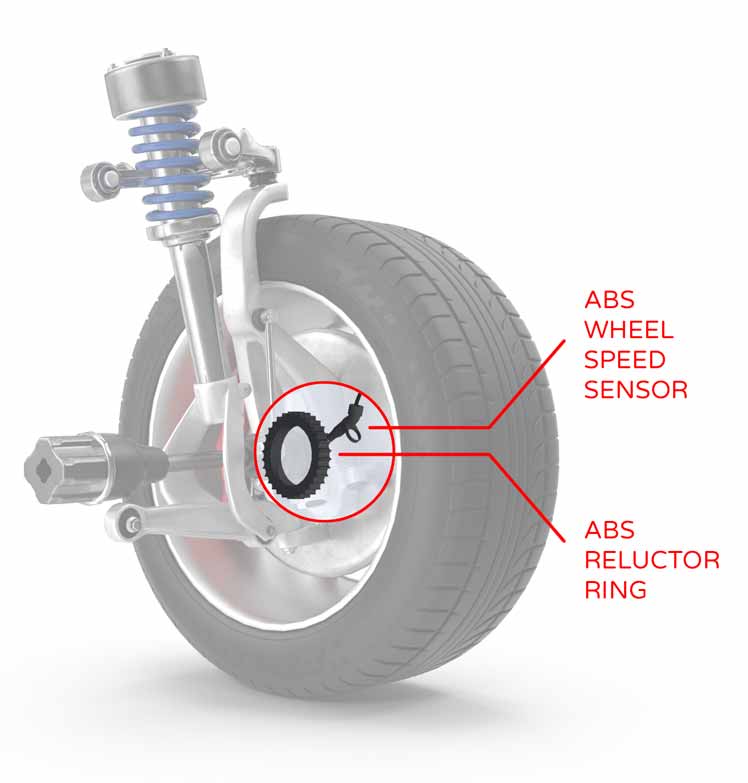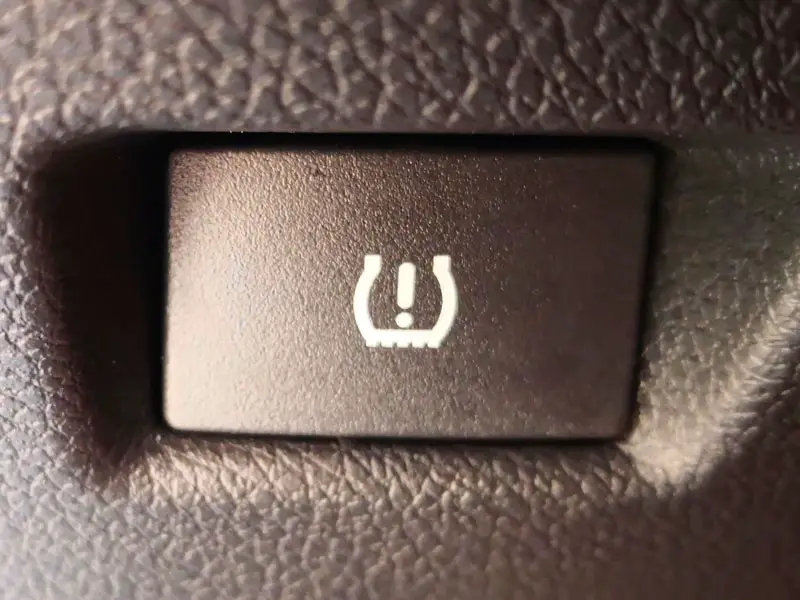Many modern vehicles make it easy to monitor your tire pressure through the dashboard. All cars produced since 2008 are required to have tire pressure monitoring systems (TPMS) installed.
How To Check Tire Pressure On Dashboard
Find the button or menu on your dashboard that lets you access your TPMS settings. This may vary depending on your car model, but it’s often located in the settings menu or on a dedicated button on the dashboard. Once you’ve found the TPMS settings, select “Check tire pressure” or a similar option.
Not all cars and trucks display individual tire pressures. If you can’t find the option to show individual tire pressures, you may have indirect TPMS instead of direct TPMS.
Checking your tire pressure with TPMS after driving a few miles can give you a more accurate reading. When your car is stationary, the tires can cool down, which can affect the tire pressure reading.
Also, the TPMS sensors may be in “sleep mode” to conserve battery life, and driving can wake them up to communicate with the system and provide a more precise reading.
Let’s take a closer look.
What Is A Driver Information System/Center (DIS/DIC)
A driver information system typically includes a digital display on the dashboard that shows various metrics such as fuel economy, trip distance, and tire pressure. Some systems may also include warnings for potential issues like low fuel or tire pressure, allowing drivers to take action before a problem becomes more serious.
One of the key benefits of a driver information system is that it can help drivers stay more informed and in control while on the road. By providing real-time feedback on things like fuel efficiency and tire pressure, drivers can adjust their driving habits to optimize performance and safety. Additionally, these systems can help drivers stay more aware of potential issues and take action before they become a problem.
Driver information systems can differ greatly from one vehicle manufacturer to another. Some may integrate the DIS into the instrument cluster, while others may include it as a menu in the infotainment system.
The location and buttons used to access the different menus that allow you to navigate to the TPMS information can be radically different. Because of this, we can’t give general instructions that work for every vehicle. You’ll need to refer to your owner’s manual if you don’t find the DIS intuitive to use.

Difference Between Direct And Indirect TPMS
Direct TPMS uses sensors inside each tire to measure the air pressure. These sensors send data wirelessly to the vehicle’s computer system, which displays the tire pressure readings on the dashboard. This type of system is generally more accurate and reliable than indirect TPMS, as it provides real-time pressure readings for each tire.


Indirect TPMS, on the other hand, uses the vehicle’s anti-lock brake system (ABS) sensors to monitor the rotational speed of each tire. If one tire is spinning faster than the others, it indicates that it has lower air pressure, and the system will alert the driver. This type of system is generally less expensive than direct TPMS, but it’s also less precise and may not detect gradual pressure loss.
Both types of TPMS have pros and cons, but Direct TPMS is considered superior overall. Since Direct TPMS is more expensive, it is usually found on more expensive vehicles, while Indirect TPMS is more common on economy cars and trucks. If you’re unsure which system your vehicle has, check your owner’s manual or consult a professional mechanic or tire shop.
Low Tire Pressure Light
When you start your car, the TPMS light on your dashboard will typically come on briefly and then go off. If the light stays on, this indicates that the tire pressure in one or more of your tires is below the recommended level. This is what’s known as a solid TPMS light.

Solid TPMS Warning Light
A solid TPMS light is usually yellow and looks like a cross-section of a tire with an exclamation point in the center. This light means your tire pressure is too low. You should pull over immediately if you’re driving when this light comes on.
A solid TPMS light can mean you have a tire that is as little as 25% below the recommended tire pressure, or it can be completely flat.

Flashing TPMS Warning Light
A TPMS light that flashes for 60 to 90 seconds after starting your car or truck means that there is a problem with one of your sensors or that your TPMS system has malfunctioned. It may also indicate that your car’s computer system is having trouble communicating with the sensors. If your TPMS light is flashing, it’s important to address the issue as soon as possible.
Sometimes TPMS Can Be Wrong
TPMS sensors use a “sleep” mode when the vehicle is not in motion to conserve battery life. The sensors wake up when the car or truck starts moving and begin transmitting data. This saves battery life and ensures that the sensors are not constantly draining power when not needed.
However, this sleep mode can also affect the accuracy of the TPMS sensors. If the sensors are not transmitting data regularly, it can be difficult for the vehicle’s computer system to receive accurate and timely updates on tire pressure. This is why it’s crucial to keep the sensors functioning correctly and replace them when needed.
TPMS sensors have a limited lifespan. As the battery begins to fail, the sensor may start to behave in unexpected ways.

A false warning is one of the most common symptoms of a failing TPMS sensor. The sensor may send an alert even when the tire pressure is within the normal range. This can be frustrating for drivers, as it may lead them to believe that their tires are underinflated when they are not.
Another symptom of a failing TPMS sensor is a failure to send a warning when the tire pressure drops too low. This can be dangerous for drivers, as it may prevent them from taking action to correct the problem before a blowout or other tire-related incident occurs.
In some cases, a failing TPMS sensor may simply stop working altogether. This can be due to a dead battery or another internal component failure. When this happens, the sensor will no longer send any data to the vehicle’s computer, and the driver will not receive any warning if the tire pressure drops too low.
How Long Does It Take For Tire Pressure To Reset?
TPMS may reset itself automatically after you’ve filled your tires to the recommended pressure. This can happen within a few minutes of driving, or it may take longer or require reaching a certain speed depending on your specific vehicle. However, in other cases, you may need to manually reset the TPMS using a button or menu option in your vehicle’s dashboard.

If you’re not sure whether your TPMS will reset itself automatically or if you need to reset it manually, consult your vehicle’s owner’s manual or speak with a trusted mechanic. They can provide you with specific instructions based on your make and model.
TPMS Vs Tire Gauge
TPMS may not always be accurate and can sometimes give false readings. This is where a tire gauge comes in handy. Tire pressure sensors are not always on and will sleep when your car or truck is parked. It takes time for them to wake up once you start driving. This means the pressure displayed may not be the actual current air pressure.
A tire gauge is a simple tool that measures the exact tire pressure, allowing you to manually check and adjust the pressure as needed. It’s always a good idea to have a tire gauge handy in case you need to check your tire pressure and make sure it’s at the recommended level.
While TPMS and tire gauges both serve the same purpose, they work differently and have their own pros and cons. TPMS is convenient because it’s built into your vehicle and alerts you when there’s an issue, but it can be less accurate than a tire gauge. Tire gauges are more accurate but require manual checking and can be a bit more time-consuming.

Milton Stick Pencil Gauge
Resources
Below are some links you may find helpful when learning about tires
- What is TPMS & how does it work? – Bridgestone
- What you need to know about tire pressure monitoring systems – Edmunds
Final Thoughts
Checking your tire pressure using the driver information system on your car’s dashboard can be a convenient and easy way to ensure that your tires are properly inflated. Whether you’re using the instrument cluster or infotainment system, the process is simple and only takes a few seconds.
By regularly checking your tire pressure, you can improve your vehicle’s fuel efficiency, extend the life of your tires, and improve your overall safety on the road. So, don’t hesitate to take advantage of this helpful feature on your car and keep your tires properly inflated for a smoother and more efficient ride!
Good luck and happy motoring.






